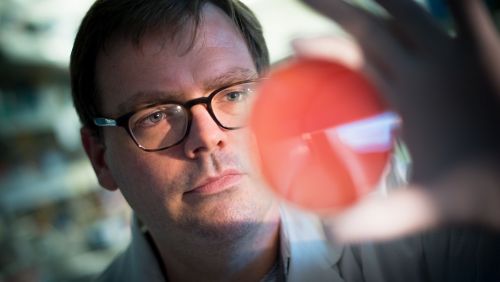St. Jude Family of Websites
Explore our cutting edge research, world-class patient care, career opportunities and more.
St. Jude Children's Research Hospital Home

- Fundraising
St. Jude Family of Websites
Explore our cutting edge research, world-class patient care, career opportunities and more.
St. Jude Children's Research Hospital Home

- Fundraising
Rigor, reproducibility and resources take center stage

Colin Kietzman, PhD, a molecular biologist and infectious disease researcher at St. Jude
I recently attended the National Institutes of Health Regional Seminar on Program Funding and Grants Administration in New Orleans, Louisiana. There, more than 60 NIH scientists and administrators hosted sessions on grant writing and the NIH to about 1,000 investigators from all 50 U.S. states and more than a dozen foreign nations. The conference gave attendees an overview of the NIH grants process, as well as general information about NIH policies.
Rigor and Reproducibility
Many of the sessions at the conference concerned rigor and reproducibility in science. Both the lay public and the scientific establishment have voiced concern about reproducibility over the past several years. In order to counter this, the NIH has outlined specific principles and guidelines for reporting preclinical research. These include issues of transparency and clarity, as well as consideration of biological variables (such as sex) in experimental design. Reviewers have also now been instructed to evaluate the scientific premise and underlying logic of the proposed work. Lastly, an entirely new section has been added to deal with validating key reagents and materials, like specific cell lines. Having dealt with cell line contamination before, I was especially pleased to see this being addressed. I was also glad to see that the NIH is taking such a proactive approach to this issue.
Resources
Another frequent topic of discussion was the allocation of NIH resources. Recently, a study found the top 10 percent of NIH-funded labs receive more than 40 percent of the total available money.
In order to create more equity and give more independent labs a shot, the NIH will limit the number of grants any one lab can have. This is interesting to a postdoc like myself because it creates a larger pool of money I could have access to as an early-career scientist once I have my own lab. This should create more opportunities for younger and mid-career researchers to have better-funded labs. This is in support of the idea that the more independent labs you have, the more diverse the minds will be working on potential cures. In theory, this will increase the likelihood someone will discover the next imatinib or HIV protease inhibitor sooner: more labs will yield more discoveries.
This conference was a great experience. I learned a lot, both about the grants process and grantsmanship, as well as policy at the NIH in general. For someone who is at an early-career stage, the value of that cannot be overstated.






